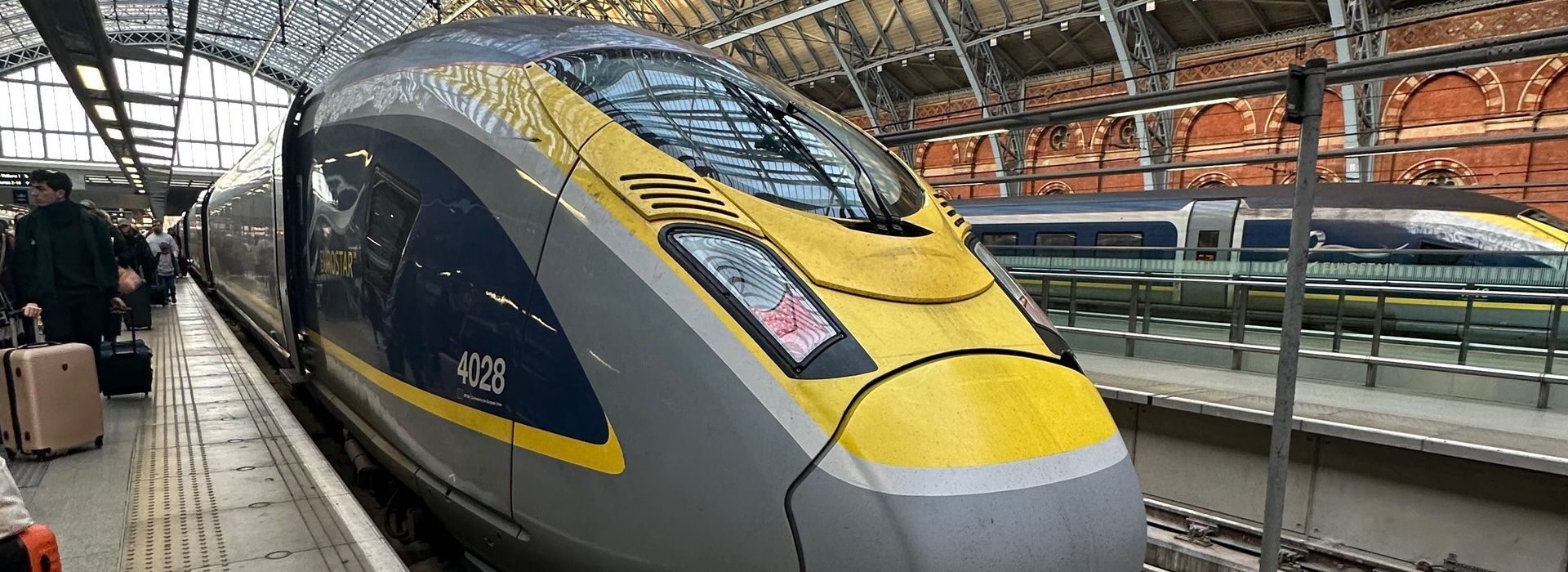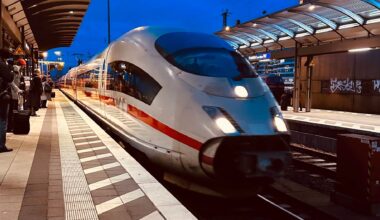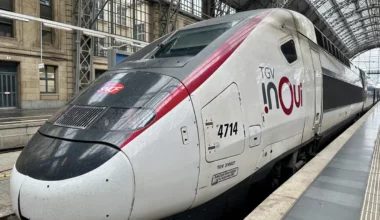Though this blog is mostly devoted to air travel and hotels, I occasionally like to review other forms of transportation, especially when they’re more convenient and more comfortable than the available air travel options. Trains are a great example of that, especially in Europe, where it’s often far more comfortable (though usually not cheaper) to take a train than a flight. On a recent trip to visit my sister in Paris, I traveled back to London aboard the Eurostar in Standard Premier class, and thoroughly enjoyed it.
Booking
I booked my Eurostar Standard Premier ticket on the Trainline app for £183.79 (£175 ticket+£8.79 in booking fees)–not cheap considering it’s a one-way train journey and a roundtrip flight costs less than half that.
Standard vs Standard Premier vs Business Premier
The Eurostar offers three classes of service. They are, from least to most expensive: Standard, Standard Premier, and Business Premier. A Standard ticket gets you a seat in a car with a 2-2 configuration, and not much else. A Standard Premier ticket, which is what I booked, gets you a roomier seat in a car with a 2-1 configuration as well as a light meal. A Business Premier ticket affords you an identical seat but a larger, hot meal, as well as lounge access, a shorter customs line, and much more flexibility to change or cancel your ticket.
Prices differ substantially between classes. If you book more than two weeks in advance, you can expect a Standard ticket to cost just under £100 and a Standard Premier ticket to cost between £100 and £175. A Business Premier ticket, no matter how far in advance or how last minute it’s booked, will typically set you back over £300.
The sweet spot for me is Standard Premier. Often, you can snag a ticket for just £15 more than Standard and you get a lot more room, getting, for me, the most important benefit of Business Premier–the extra space and less crowded carriage–while avoiding an extra £200 for a ticket. Walking through the Standard class cabin on this trip, I was relieved I had booked Standard Premier. The Standard car felt extremely cramped and–I’m not sure whether this is usually the case–it was absolutely packed. Whereas in the Standard Premier carriages, only about 40% of seats were occupied, the Standard cars were 95% full, which meant much more noise and much less overhead space for luggage.
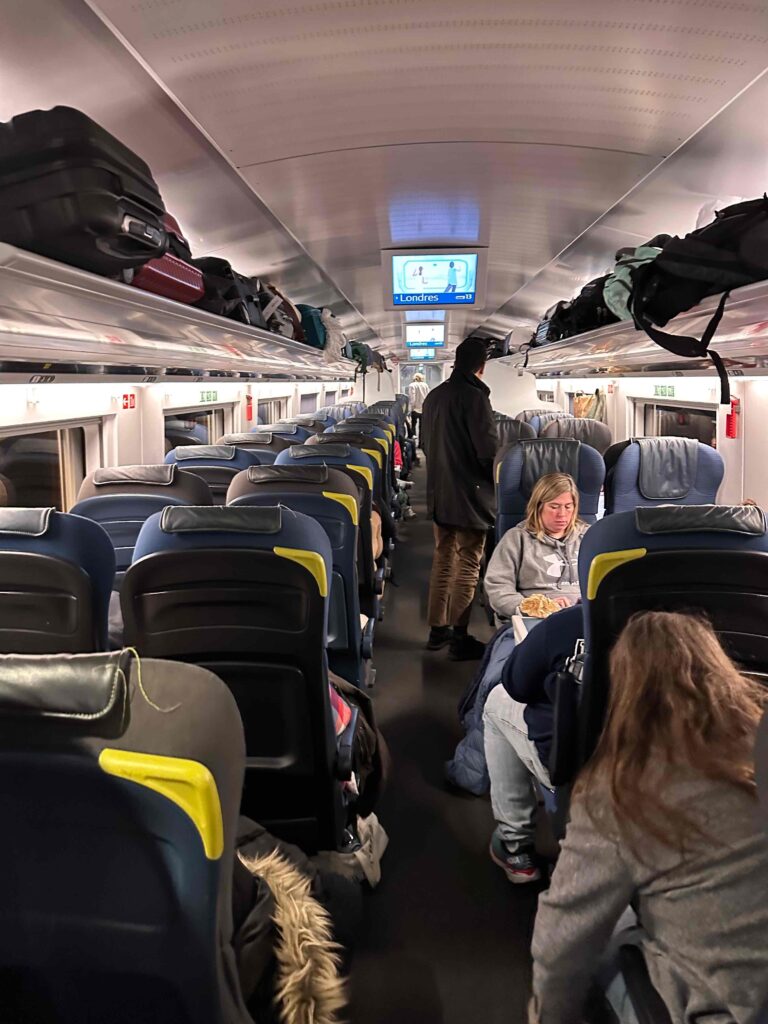
Paris Gare du Nord
I arrived at Paris Gare du Nord around two and a half hours before my 2:31 departure but decided to walk around the 10th Arrondissement before my train. If you’ve got any longer than that, I recommend exploring other parts of the city, because this neighborhood is not particularly interesting, beautiful, or safe.
I entered Gare du Nord less than 90 minutes before my train was due to depart and was greeted by an uncharacteristically empty station. I went upstairs to the first floor (the second floor to us Americans) and cleared customs and security in under 10 minutes.
Though I’d arrived early intending to use my Amex Platinum Card to enter the Eurostar Business Premier Lounge (which looks swanky), I was sadly informed at the entrance that only the French, Belgian, Dutch, or British versions of the card grant access to the lounge for those not holding Business Premier tickets.
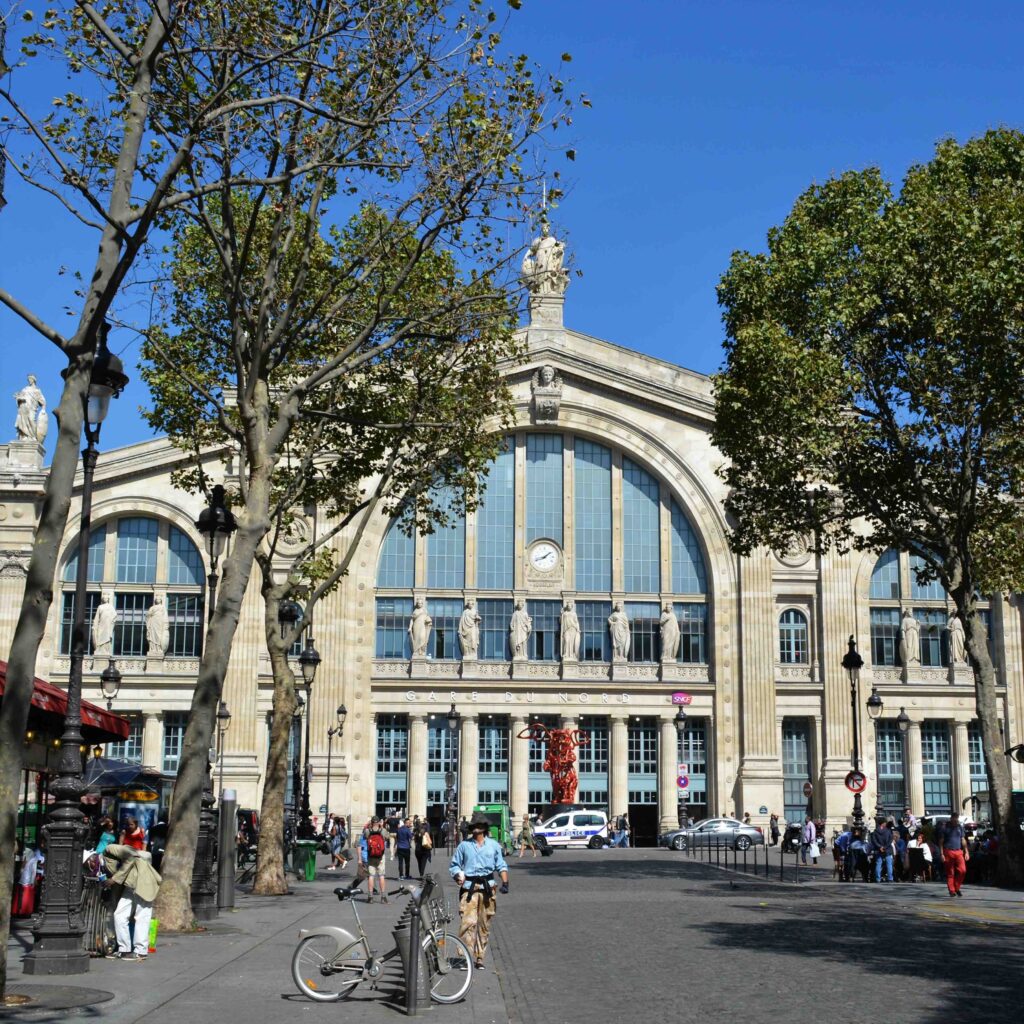
Eurostar Standard Premier seating
Each Eurostar Standard Premier car has between 32-40 seats and my train had three Standard Premier cars. Seats in Standard Premier class are set up in a 2-1 configuration and are identical to Business Premier seats.
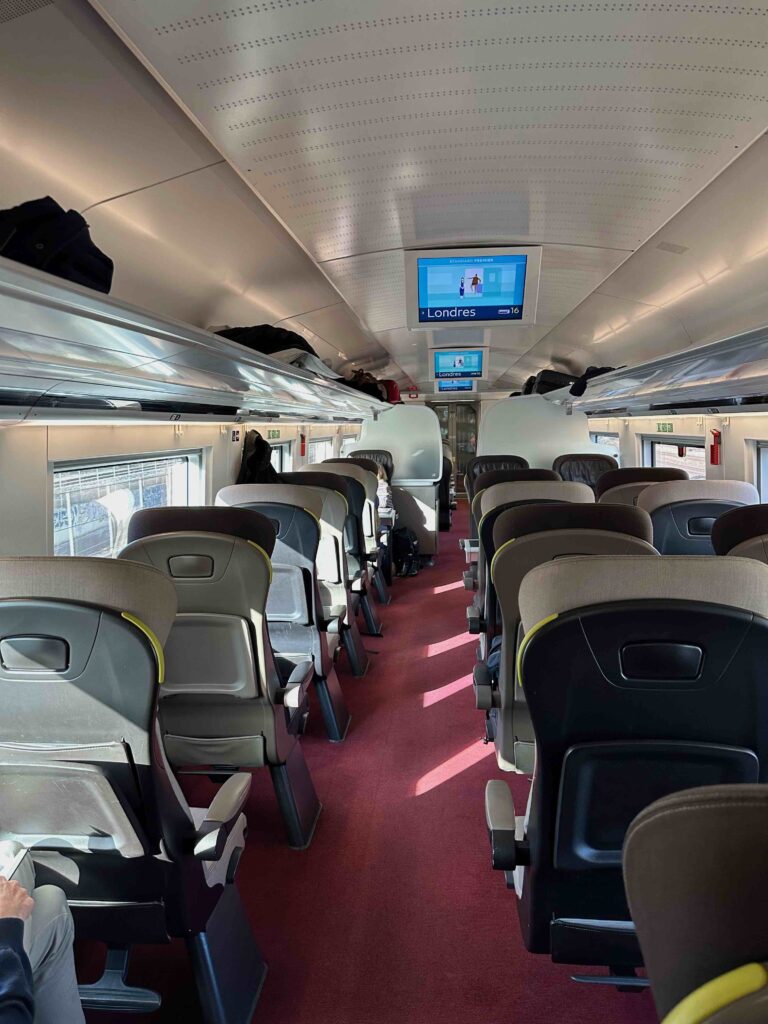
The benefit over Standard class, which is set up in a 2-2 configuration, is slightly wider seats and direct aisle access from window seats, which is great for solo travelers. Legroom is good (much better than on a narrow body aircraft), but the seats were very firm and didn’t seem particularly well-padded.
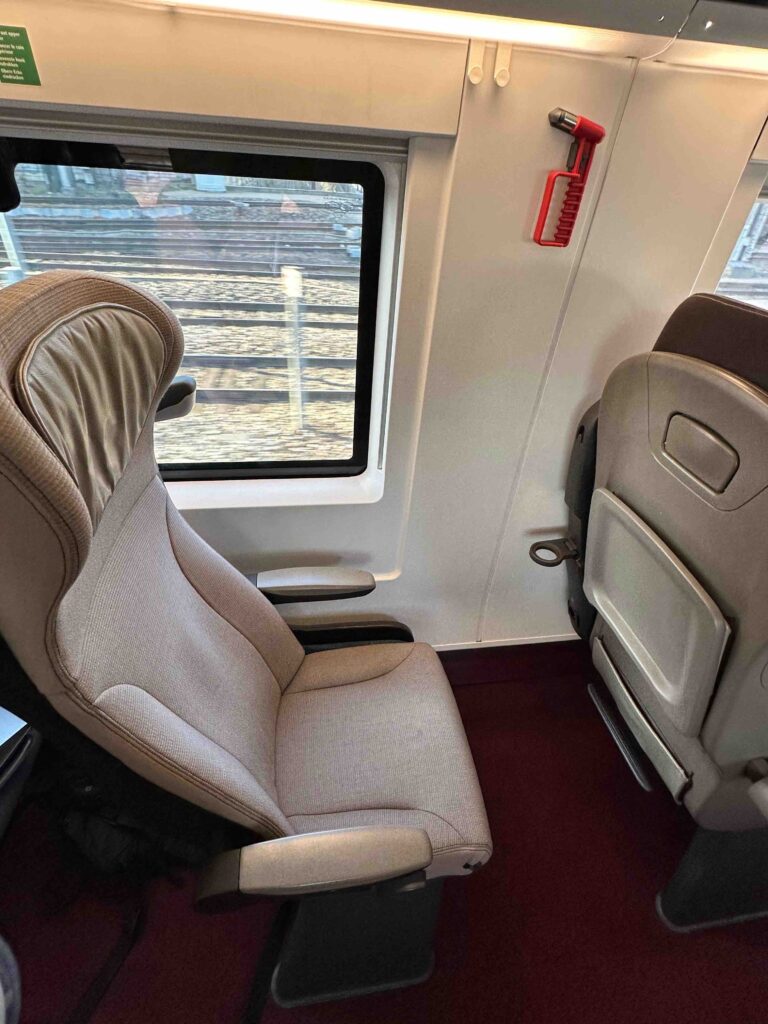
Each seat has a tray table, cupholder, USB port for charging, and either a British or European power outlet.
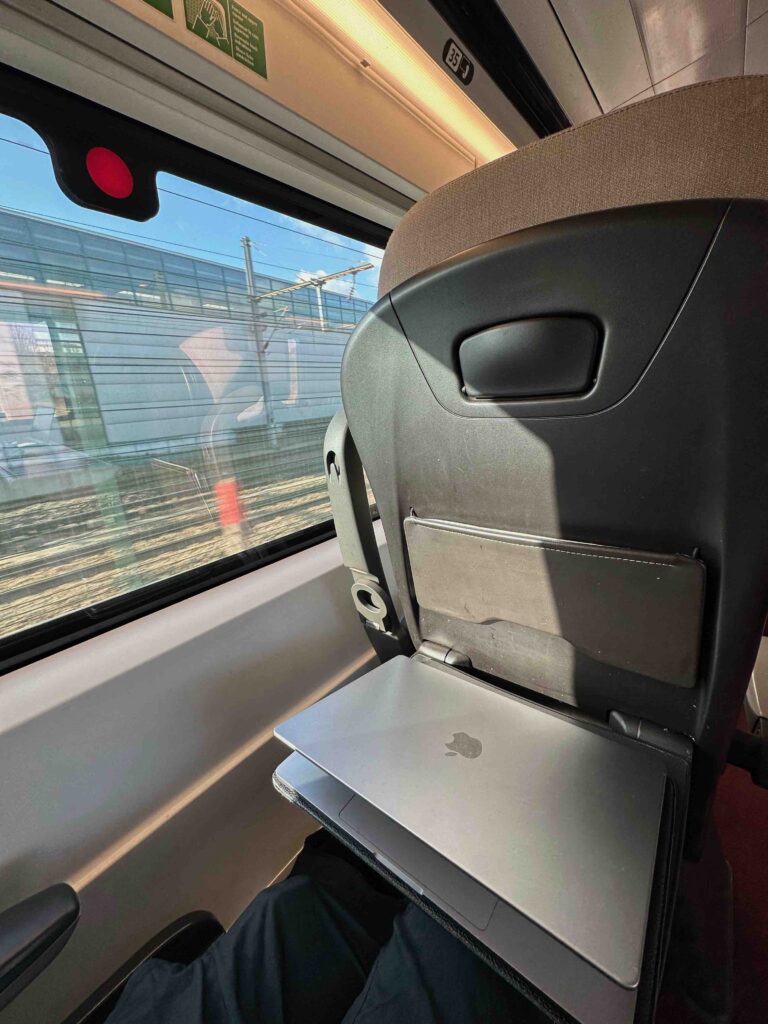
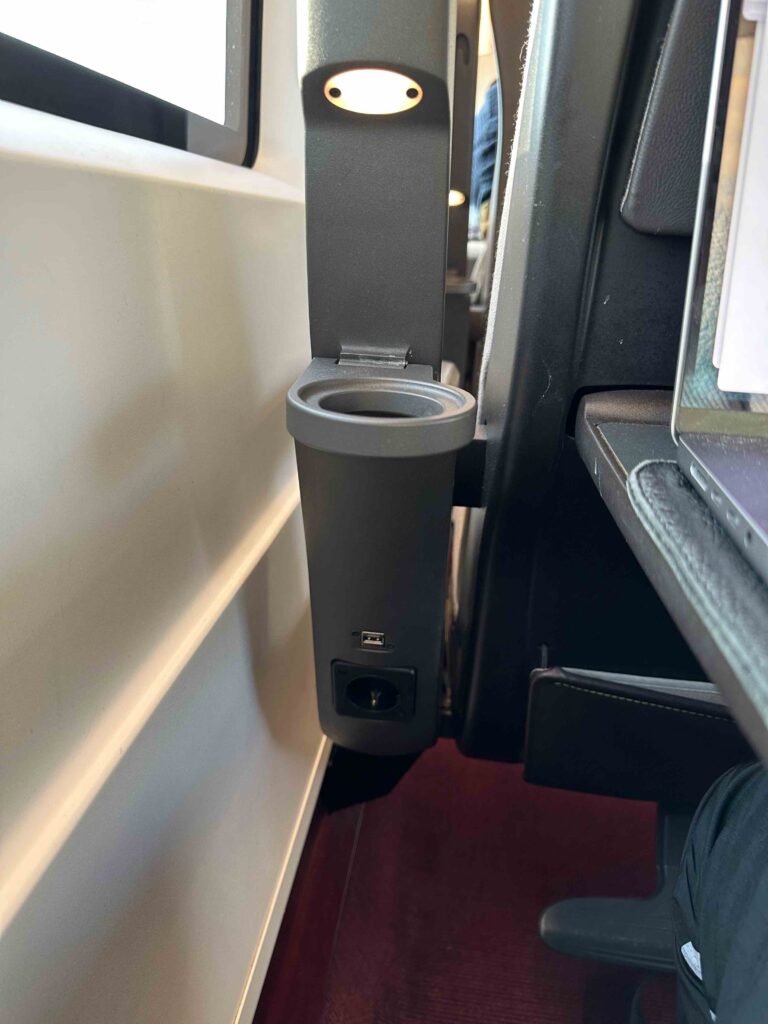
Each also has a plastic recline lever, which provides a good amount of recline—better than that on a wide-body economy class seat.
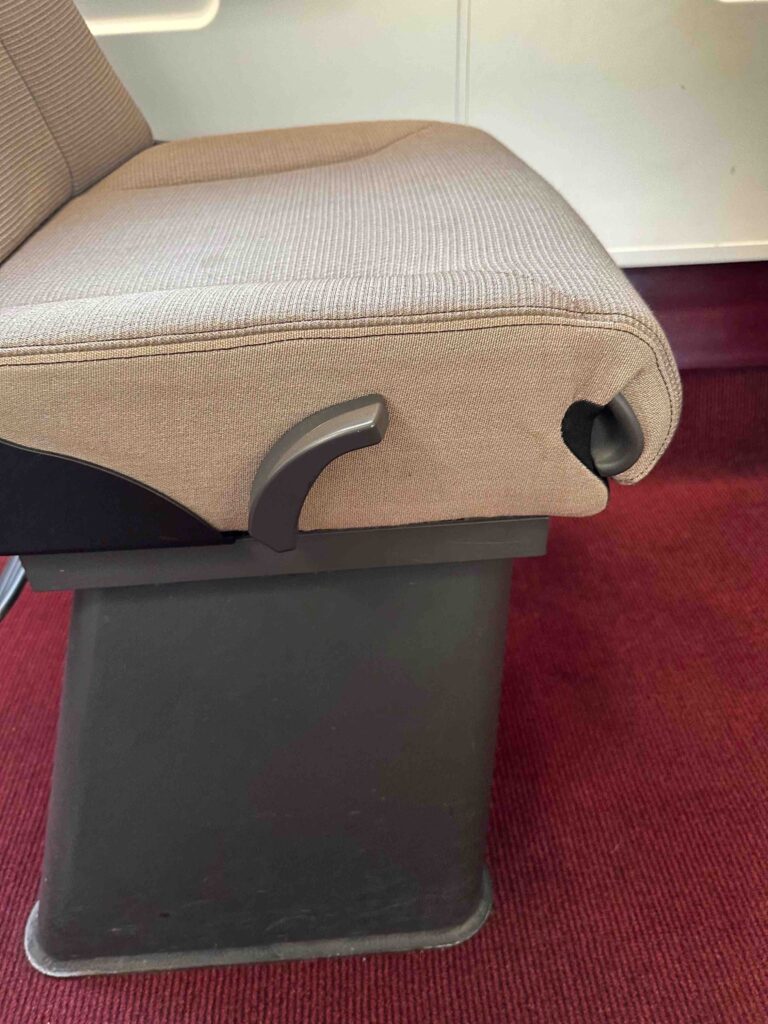
There are numerous seating options, including standard single seats and pairs of seats, both forward- and rear-facing. There was ample overhead luggage storage along both sides of the carriage.
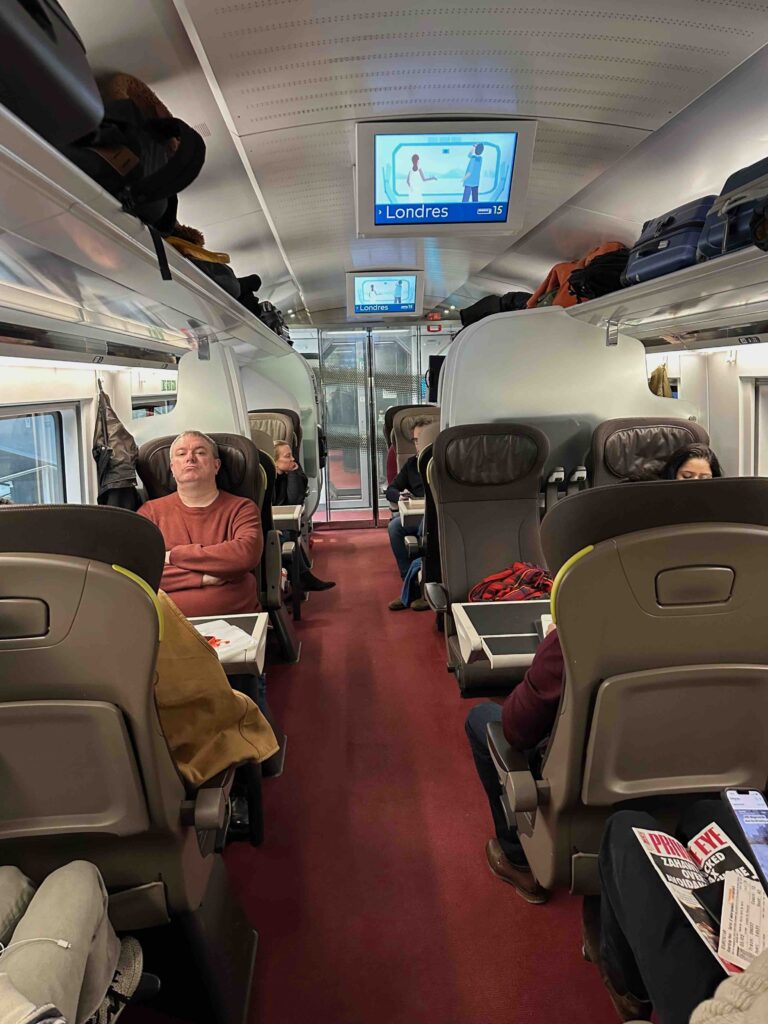
I was originally seated in carriage 15 at seat 51, an individual, but rear-facing, window seat. All three Standard Premier carriages were pretty empty, so I ended up moving to a forward-facing seat in carriage 16.
Eurostar Café Métropole
In the center of the train was the cafe car, Café Métropole, which has a small selection of drinks and grab-and-go food. There was nowhere to sit and the food and drink options didn’t appeal to me, so I didn’t stay for long.
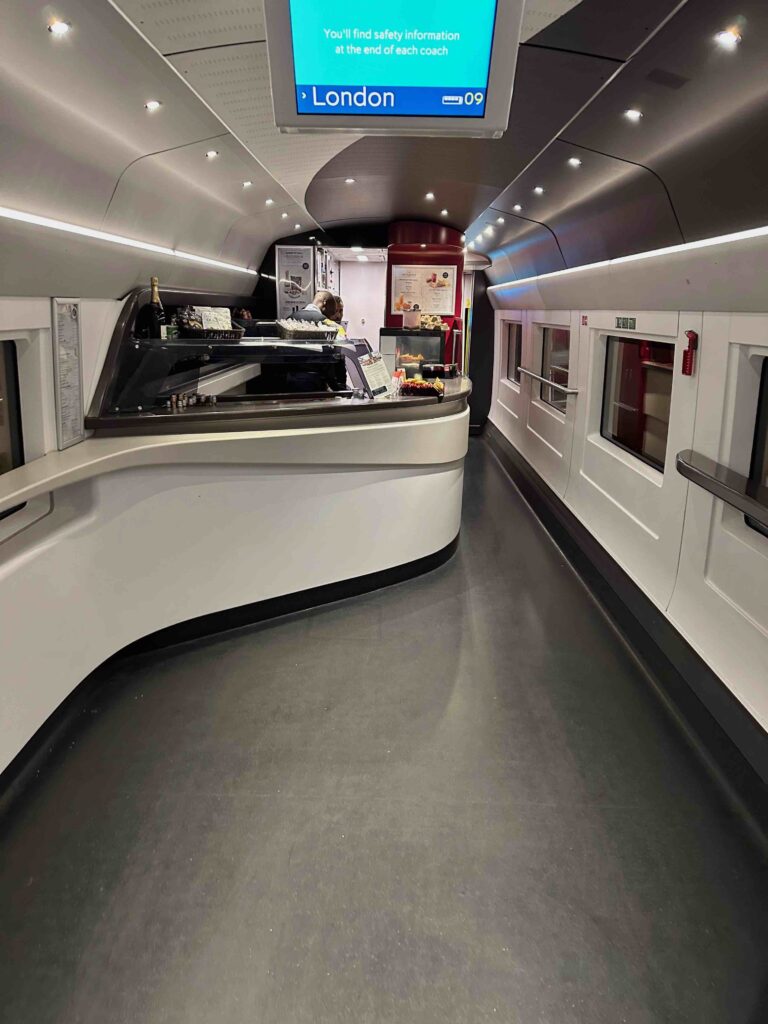
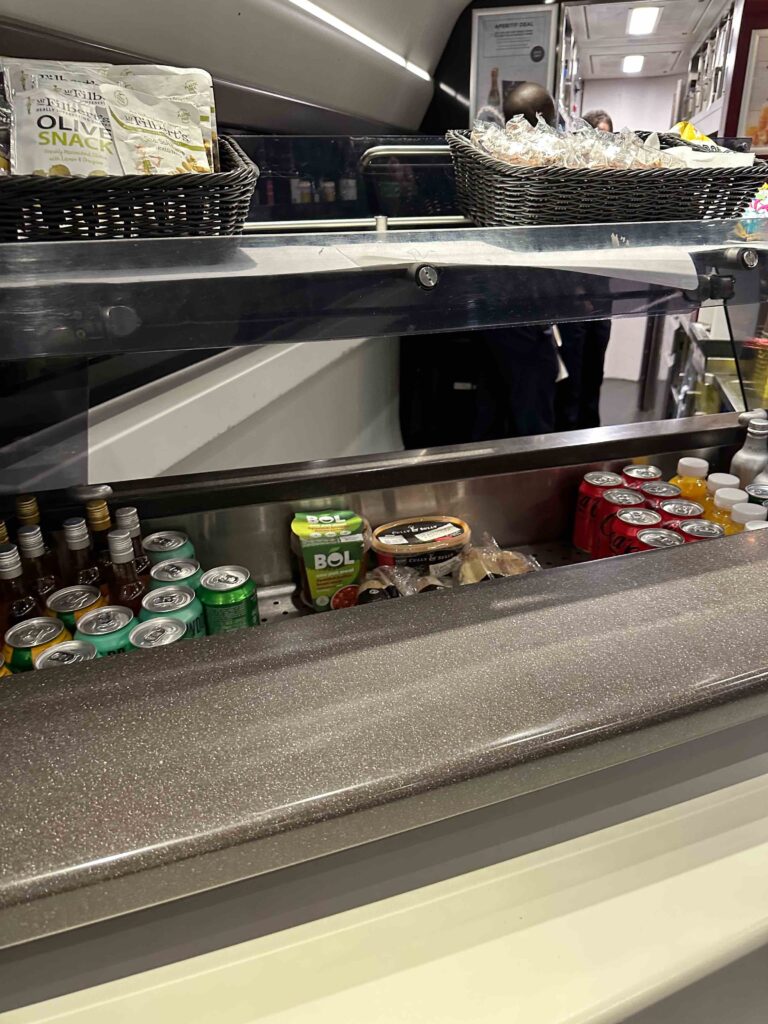
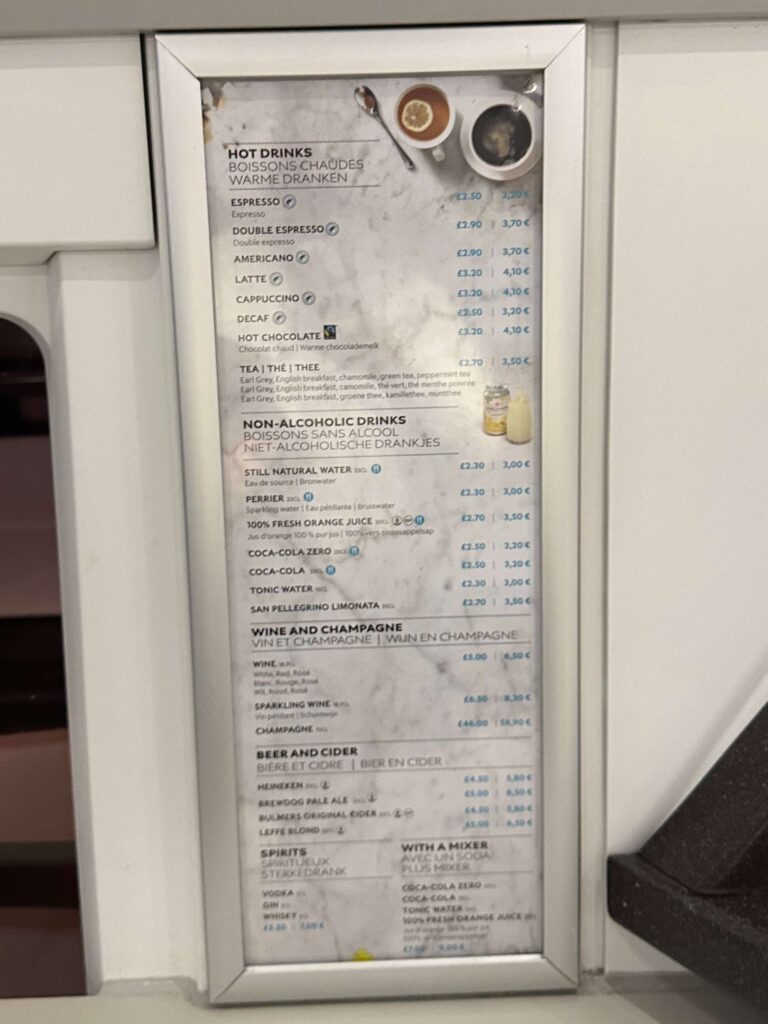
Eurostar Standard Premier food & drink
About 15 minutes after departure, attendants came around with a food and drink cart. Lunch comprised a choice of two main dishes, flaked salmon and a four-grain salad or a beet and caramelized onion tart, as well as a chocolate tart for dessert. There were also a variety of soft drinks and alcoholic beverages offered, and I chose a bottle of white wine.
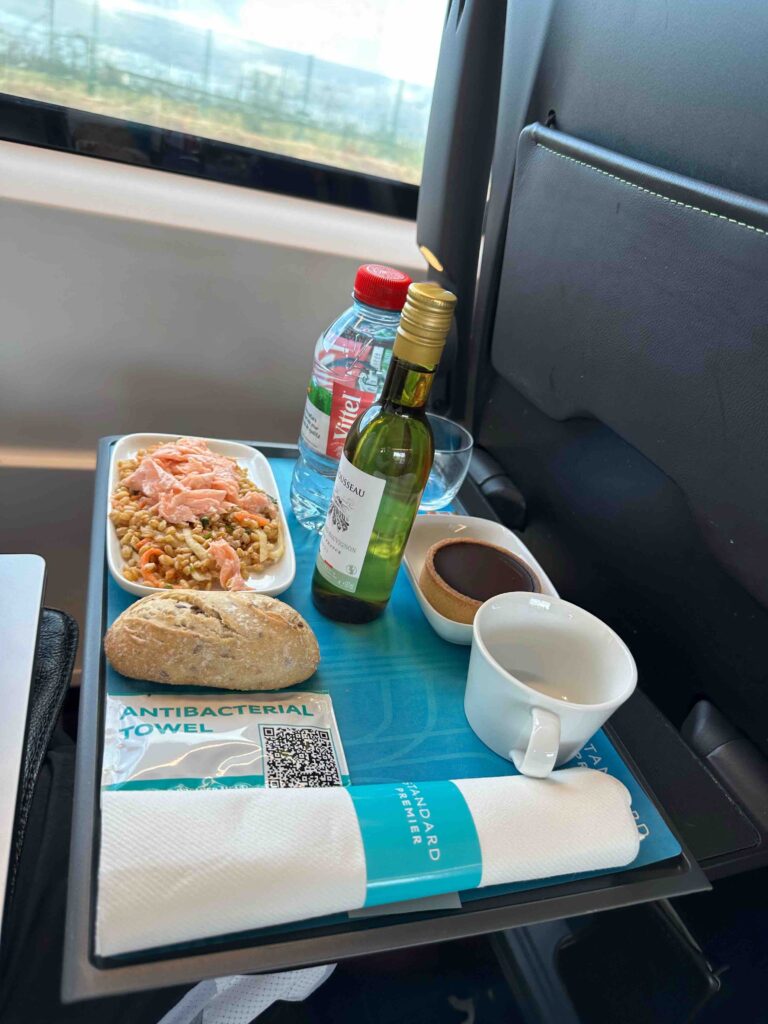
I was impressed by the food. The salmon dish was light and flavorful, and the chocolate tart was seriously delicious—not too sweet and extremely creamy.
Eurostar Wi-Fi
The onboard Wi-Fi was free but spotty. There were times when I was getting 10 Mbps, but in the Channel Tunnel and parts of France, it was unusably slow or completely non-functional. Overall, I had Wi-Fi for about 60% of the journey.
Eurostar Standard Premier lavatories
There were three lavatories between the three Standard Premier carriages. They were spacious and looked relatively clean but smelled bad. As far as I could tell, there was no difference between lavatories in different classes.
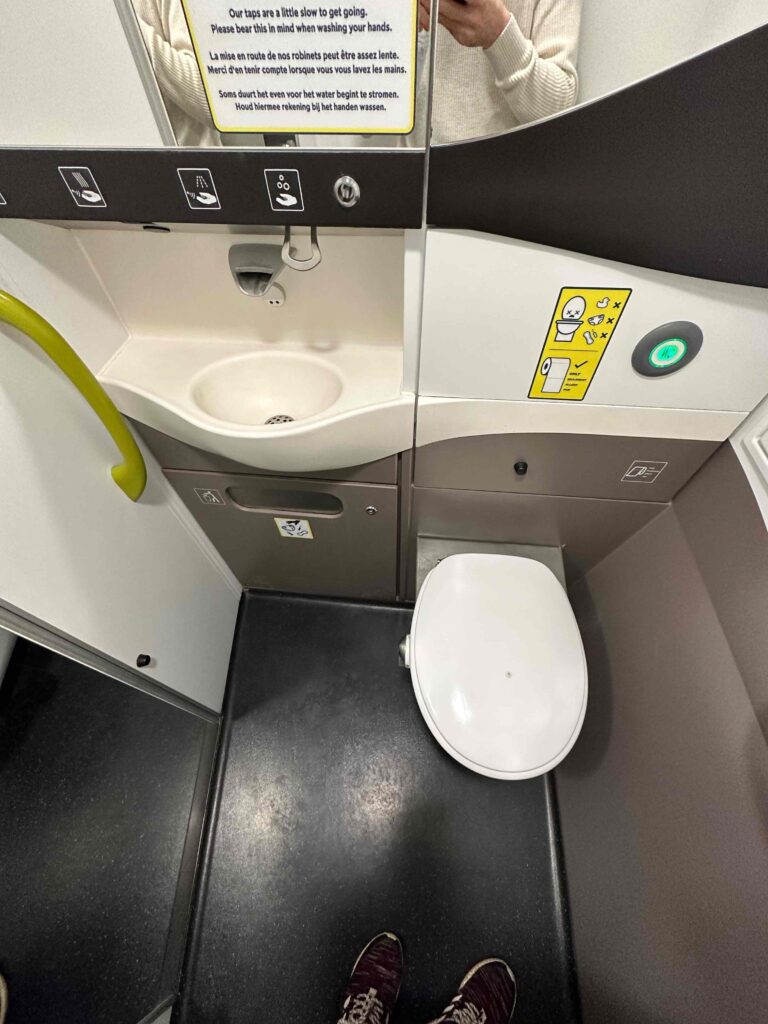
Eurostar Standard Premier service
Service was a major weak spot on this journey. I really appreciated that lunch was served quickly after our departure from Paris, but the two staff members who serviced our car were extremely frosty and not particularly responsive. Aside from lunch service, they chatted loudly at the front of the car and looked annoyed when passengers walked between them.
Lunch took well over an hour to be cleared and, since the tray tables were too small to fit both food and a laptop, I decided to return my tray to the kitchen. When I asked where I should put my tray, one rolled her eyes and said, “we were about to come clear those” while the other pointed vaguely at the counter and barked “there.” I don’t know whether to chalk this up to surly French service culture or whether these two were having an off day, but it left a bad taste in my mouth.
Arrival in London
When we emerged from the Channel Tunnel, it took another 20 minutes before we began entering London, where we slowed down and I was treated to some gorgeous sunset viewsof the English countryside.

About 30 minutes later, we pulled into St Pancras International and began to disembark. We’d already cleared security and border control in Paris, so despite there being no additional checks in London, it was slow getting out of the station. For whatever reason, there are only a few doors through which passengers can exit the Eurostar portion of the station, a major bottleneck.
Final thoughts
As far as travel between Paris and London goes, the Eurostar is nearly as good as it gets, and I think that paying £50 more than a flight for a Standard class ticket can certainly be worth the money. For me, in cases where Standard Premier is less than £50 more than Standard class, I think the upgrade makes a lot of sense, especially considering the crowding in Standard class on this train.
Harder to justify, I think, is the Business Premier ticket. Lounge access, a slightly better meal, a faster security line, and added flexibility just don’t seem worth the extra £200 each way, given you could instead buy last-minute business class flights plus taxis to and from the airport for less money.
In any case, given the speed and comfort of the Eurostar, I’ll absolutely be taking this train again soon.
